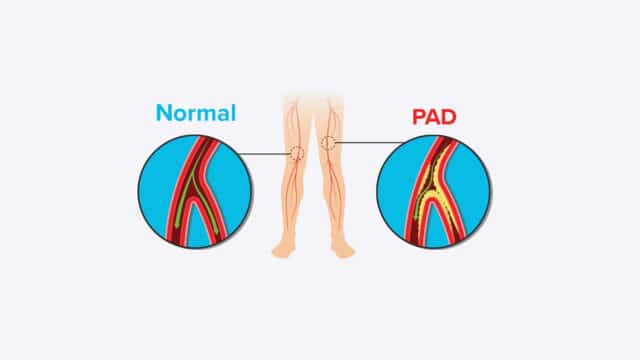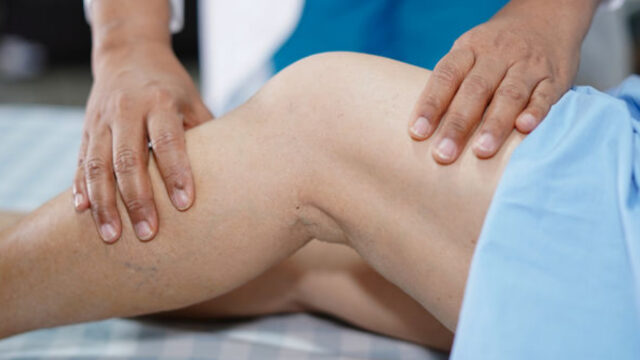Recognizing PAD Symptoms: What You Need to Know
Don’t dismiss minor leg pain as a part of growing older. You might be among the approximately 12 million Americans living with Peripheral Artery Disease (PAD). PAD may lead to a non-healing wound, such as an arterial or venous ulcer or even a diabetic foot ulcer. Identifying PAD symptoms early is crucial for preventing complications and promoting overall health.
Have You Had Any of These Common PAD Symptoms?
- Pain or cramps in the back of your leg while walking or exercising that stops when you stop.
- Pain in your feet or legs while resting or that wakes you from sleep.
- Decreased or no hair growth on your feet or legs.
- Shiny skin on your lower legs and feet that is cool to touch.
- Legs and feet appear pale when raised and bluish/purplish when hanging down.
- Weak or absent pulses in your legs or feet.
- Numbness or tingling in your feet and legs.
- A sore or wound on your toes, legs or feet that do not heal.
You may have PAD without these signs. Up to 40% of people living with PAD do not experience leg pain or symptoms until a wound develops. Regular check-ups and screenings are important for individuals at risk of developing PAD, even in the absence of noticeable symptoms.
Risk Factors For PAD Include:
- Smoking
- Diabetes
- High blood pressure
- High cholesterol
- Age, 65 years or over
- Excessive weight
- Family history of PAD or arterial disease
Understanding your risk factors for PAD can help you take proactive steps to prevent or manage the condition.
If You Are At Risk, Get Screened For PAD.
Screenings and Diagnosis
- Blood tests for diabetes and high cholesterol can identify if you are at risk for PAD.
- Simple, non-invasive tests such as Doppler ultrasound or Ankle-Brachial Index (ABI) can evaluate blood flow in your arteries and help diagnose PAD.
- An angiogram is a procedure that locates blocked or narrowed blood vessels by injecting a contrast dye into an artery in your leg and watching how blood flows with an X-ray.
Treatment for PAD
- Prescription medications to control blood sugar and cholesterol
- Surgical intervention or angioplasty to unclog blocked arteries
- Lifestyle changes to improve circulation, including diet and exercise
Ways to Prevent PAD
- Stop smoking
- Exercise often
- Follow a low-fat diet
- Maintain a healthy weight
- Control your blood sugar
- Monitor your blood pressure
Adopting a healthy lifestyle can help prevent the development of PAD and reduce the risk of complications associated with the condition.
You can find more information about peripheral artery disease and common chronic wounds at our 2021 The Year of Healing page.
If you have PAD and are living with a non-healing wound, contact a Wound Care Center to discuss the advanced treatments available. Healogics specializes in providing comprehensive wound care for patients with PAD, helping them achieve optimal healing and improved quality of life.



